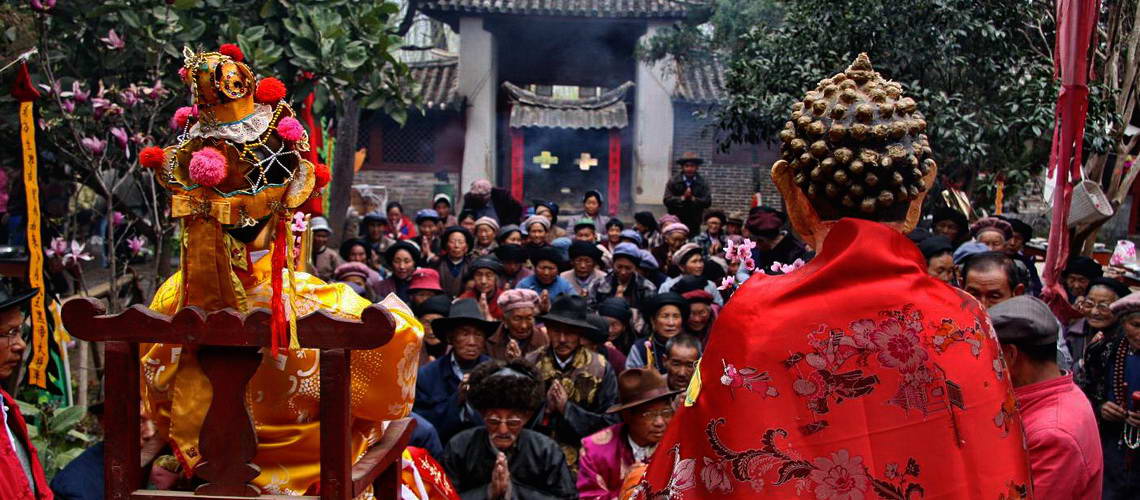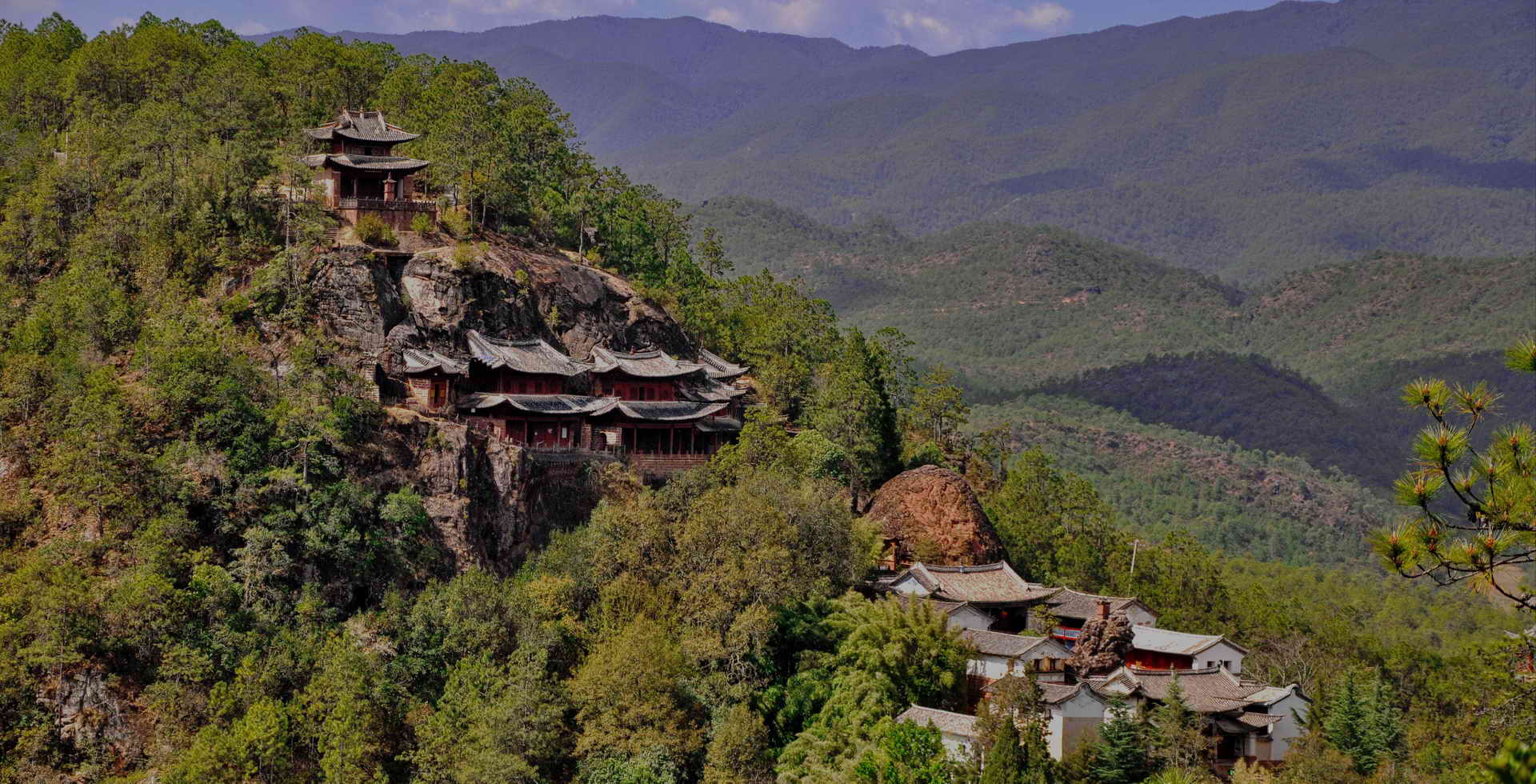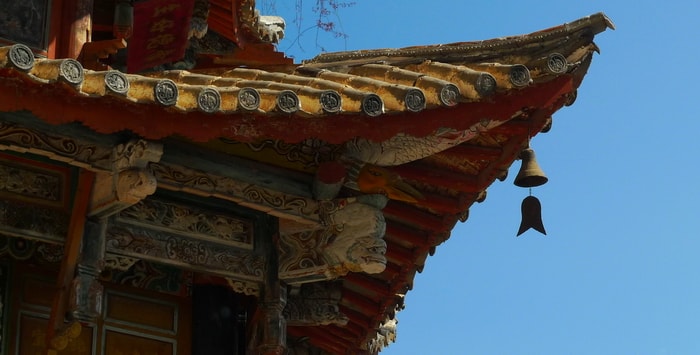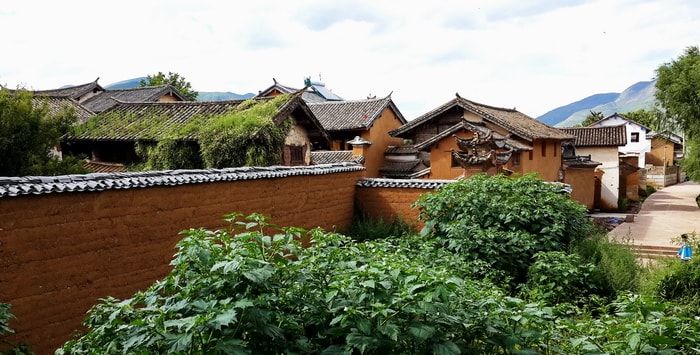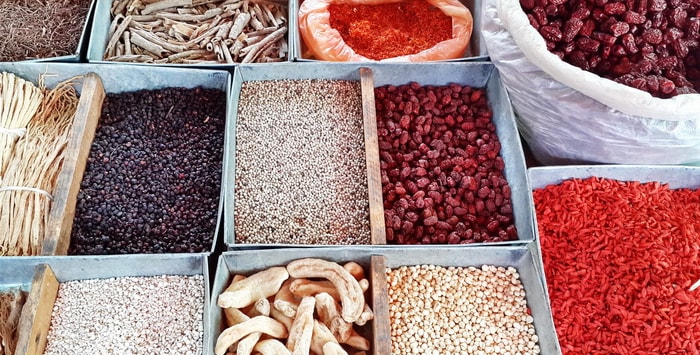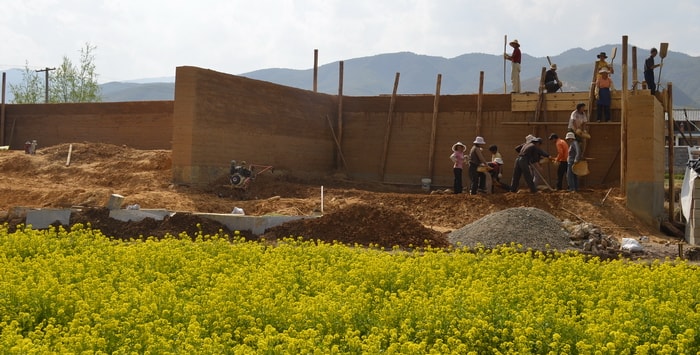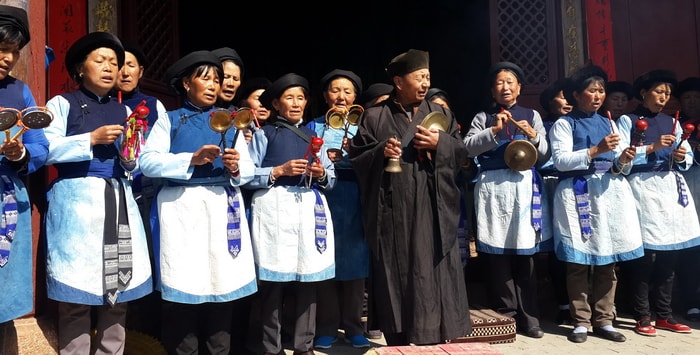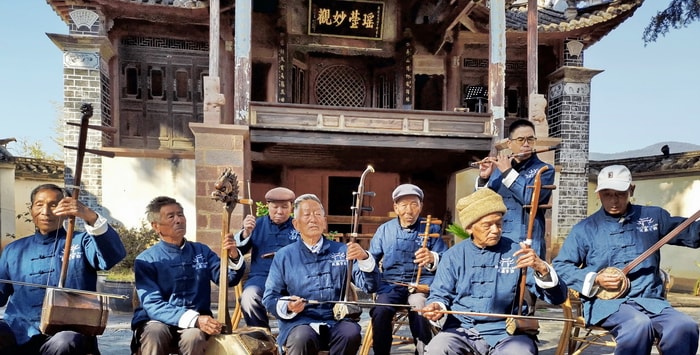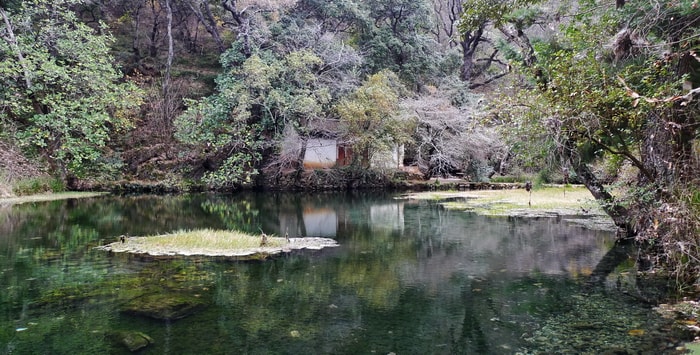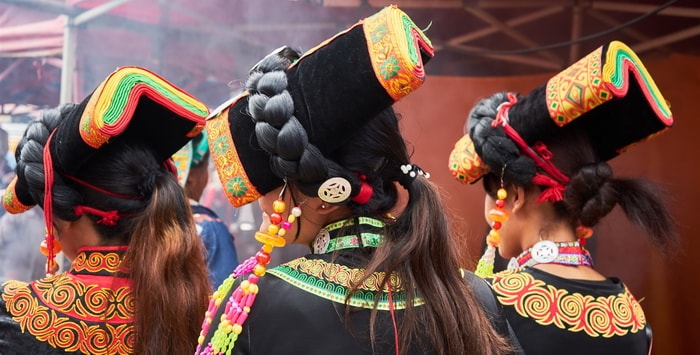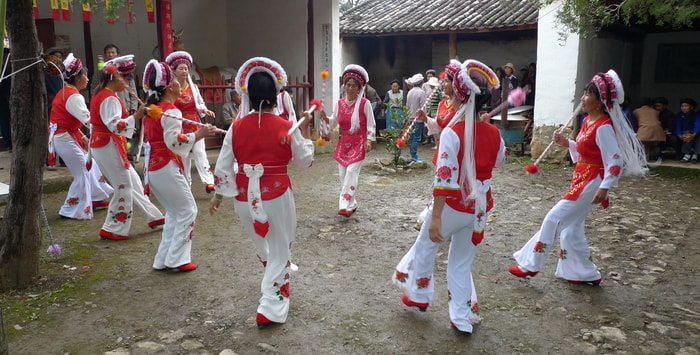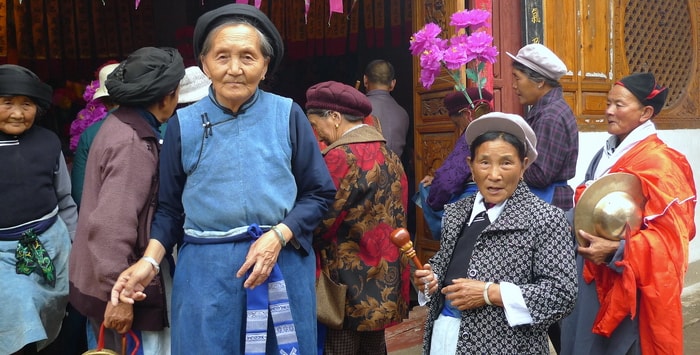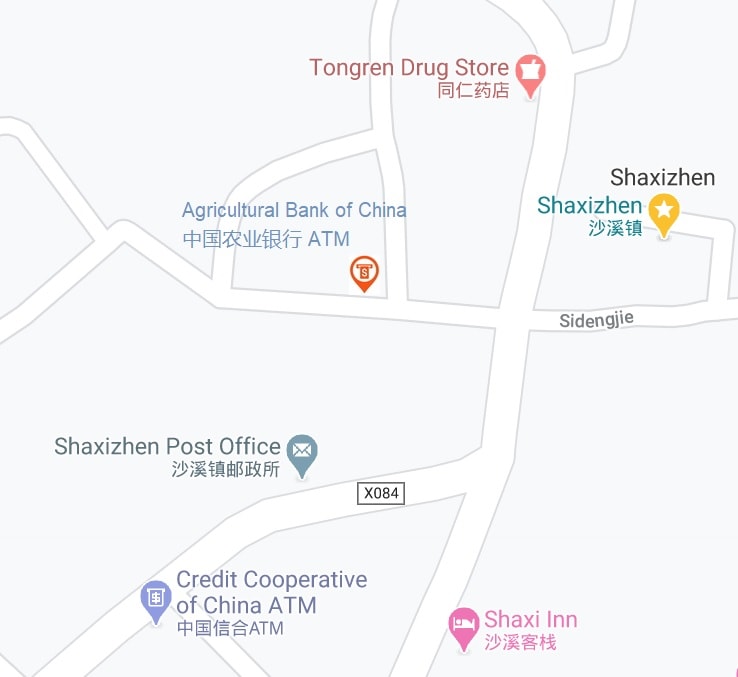The Southern Silk Road, better known as as the Ancient Tea Horse Caravan Road predated its more famous northern counterpart by at least 300 years, The first written records of the route are from the Tang Dynasty (618-907), which was locally known as the Nanzhao Kingdom period (649-920), but trade had been taking place long before this time. From the hillside plantations of Simao and Xishuangbanna the muleteers brought pu'er tea; Burmese traders, often accompanied by Indian monks bought hides and animal bones, for use in in Chinese medicine. Salt, an essential commodity before the advent of refrigeration, came from Qiaohou, south of Shaxi, and from Yunlong across the mountains to the west, along with silver from Misha, and nearby Heqing. As well as felt, silk and precious stones came that most valuable of medicines, opium, perhaps Yunnan's largest cash crop at the time. All of these and more were traded with Tibetans for items such as musk, rare fungi and exotic medicines, found in the frigid mountains to the north.
The main village of Sideng became an important staging post for the caravans, and the whole valley flourished in the Ming and Qing Dynasties. The market square became famous throughout the southwest, and attracted traders from a wide range of cultures that only enhanced the profitability of the Tea Horse Road. Hani from southern Yunnan brought tea and rich cloths. Naxi from Lijiang brought timber, Muslim Hui bought yak furs and horses. The wealth generated by all this trade is clearly evident in the ornate local architecture, with their imposing gate towers and spacious courtyards. At the center of all this, stands the Qing dynasty theater, directly across from the 400-year old temple, dedicated to as wide a range of faiths as the merchants and pilgrims that turned this remote village into a vibrant trading hub, which lasted well beyond the end of the Qing Dynasty (1614-1911).
The caravan routes finally died out around 60 years ago, when the newly formed People's Liberation Army began its advance on western Tibet, and requisitioned every pack animal they could find. The centuries old trade routes came to an abrupt end by 1950, when the communists' ban on private markets put the last nails in the coffin. The locals quickly reverted to agriculture and passed the last few decades in relative isolation.
More recently, the World Monument Fund added Shaxi's market square to its Watch List of 100 Most Endangered Sites in 2001. By this time squatters had taken over much of the village, and many of the buildings had decayed to the point of collapse. In 2002, the Swiss Federal Institute of Technology Zürich (ETH) and the People's Government of Jianchuan County jointly established the Shaxi Rehabilitation Project (SRP)
to protect and revitalize the cultural and natural heritage of Sideng Village and the Shaxi Valley. With USD1.3 million in funding from the World Monument Fund they hired a Swiss conservation expert Jacques Feiner, who had previously made his name at Yemen's old city of Sanaa, one of the earliest centers of population in human history. His approach has been to restore rather than rebuild, using traditional techniques and materials wherever possible. Apart from the restoring the temple and the stage, the entire market plaza was drained and relaid, which has led to a number of major awards, including a UNESCO Award of Distinction for cultural heritage preservation.
For those interested to explore more about the Tea Horse Road's history, culture and legacy, we highly recommend Peter Micic's blog, the Tea Horse Road project. Peter is a skilled translator and writer, with a passion for Chinese history in this part of the country. He explores old tree plantations, writes poems and follows the original sections of the Tea Horse Road to give readers a first hand experience of what it was like to travel with the ancient mule caravans. An excellent source of this storied route's visual history is the award-winning documentary Delamu, which follows one of the last muleteers through the rugged Nujiang region of Yunnan. Along the way are intimate portraits of the indiginous people who still live along the Tea Horse Road.
